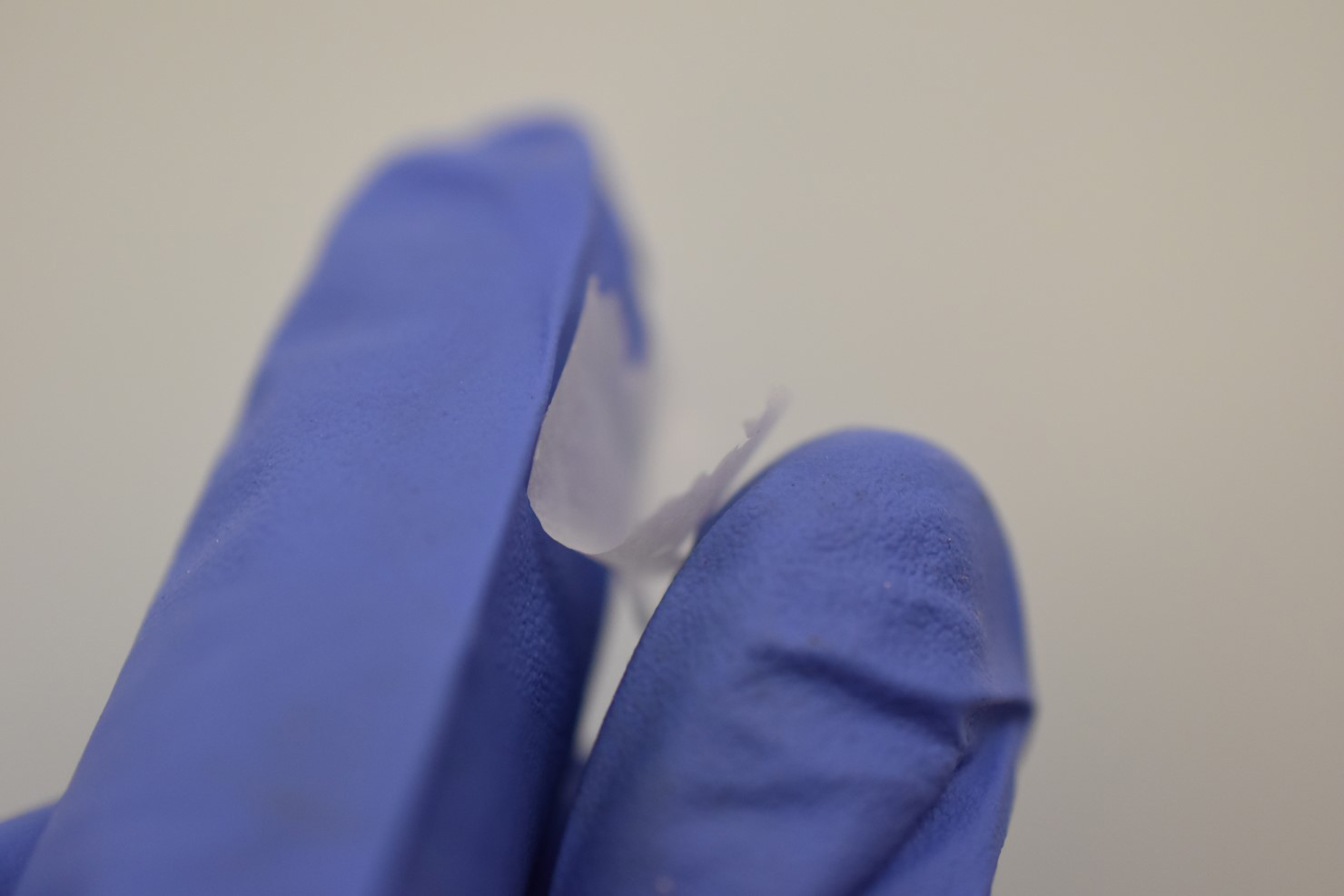Chemists from University College London (UCL) have created the world’s thinnest spaghetti using regular flour, liquid, and an electrically charged device that can create a strand that is just 372 nanometers across – narrower than the wavelength of blue light. It is so thin, it can only be seen with an electron microscope.
The nanopasta was used to create a mat of 2 centimeters (less than one inch) across. That is clearly visible but its individual fibers are not. The flour and liquid formic acid were spun using a technique called electrospinning. The raw pasta mixture was pulled through the tip of a needle by an electric charge, forming a spaghetto (yes, that is the singular) 200 times thinner than a hair.
“To make spaghetti, you push a mixture of water and flour through metal holes. In our study, we did the same except we pulled our flour mixture through with an electrical charge. It’s literally spaghetti but much smaller,” co-author Dr Adam Clancy said in a press statement seen by IFLScience.
The work was performed by Beatrice Britton, as part of her master’s degree in chemistry at UCL, which places this as the thinnest pasta in the world. The second thinnest has a width of 400 microns (so about 1,000 times thicker), and you might be surprised to know that it is not made by a machine. Su filindeu (which might mean either threads of God or come from the Arabic word for hair) is a pasta made by hand by around 10 women in the Sardinian city of Nuoro.
“I don’t think it’s useful as pasta, sadly, as it would overcook in less than a second, before you could take it out of the pan,” co-author Professor Gareth Williams added.
On the culinary front, the Italian nonne stay winning. However, the team was not trying to develop a new shape of pasta. It plans to use these starch nanothreads for intriguing technical applications, several of them in the medical world.
“Nanofibers, such as those made of starch, show potential for use in wound dressings as they are very porous. In addition, nanofibers are being explored for use as a scaffold to regrow tissue, as they mimic the extra-cellular matrix – a network of proteins and other molecules that cells build to support themselves,” Professor Williams explained.

The nanofiber mat held between two fingers.
Image Credit: Beatrice Britton / Adam Clancy
“Starch is a promising material to use as it is abundant and renewable – it is the second largest source of biomass on Earth, behind cellulose – and it is biodegradable, meaning it can be broken down in the body,” Dr Clancy added.
“But purifying starch requires lots of processing. We’ve shown that a simpler way to make nanofibers using flour is possible. The next step would be to investigate the properties of this product. We would want to know, for instance, how quickly it disintegrates, how it interacts with cells, and if you could produce it at scale.”
A paper describing this fascinating breakthrough is published in the journal Nanoscale Advances.
Source Link: World's Thinnest Spaghetti Is 200 Times Narrower Than A Hair